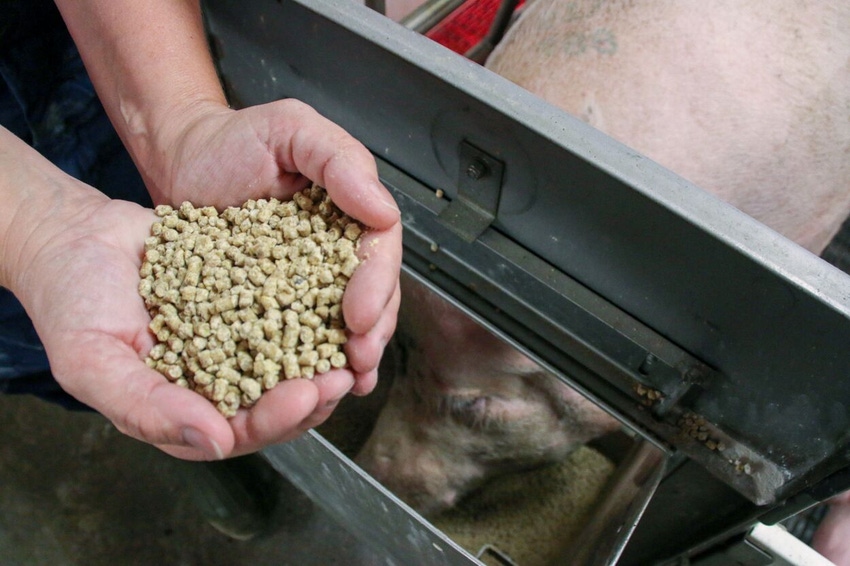Impact of flavor in lactation diets on sow, litter performance
Increased palatability of the diet can increase feed intake during lactation.
July 7, 2022

Maximizing sow lactation feed intake is important for improving litter growth performance and minimizing sow weight loss. Sow performance during lactation can be limited by feed intake due to a decrease in appetite, especially in the early post farrowing period. Many factors impact feed intake, including environment and diet composition.
Increased palatability of the diet can increase feed intake during lactation. A feed additive developed by Adisseo (Krave AP) is formulated from a specific combination of natural and artificial flavoring compounds known to be attractive to pigs.
The objective of this study was to determine the effect of supplementing the flavor additive in sow lactation diets on sow feed intake, sow weight and backfat change, and litter performance. A total of 105 mixed parity sows (DNA 241, Columbus, Nebraska) and litters (DNA 241 × 600) were used at the Kansas State University Swine Teaching and Research Center across four batch farrowing groups. On day 110 of gestation, sows were moved into the farrowing house. At this time, backfat, caliper score and weight were all recorded. Sows were fed either a standard corn-soybean-based lactation diet or the standard corn-soybean-based lactation diet with 0.05% feed flavor added (Krave AP, Adisseo, Alpharetta, Georgia) at the expense of corn. Sows were given six pounds of feed from d 110 of gestation until farrowing and then given ad libitum access to feed during lactation.
This trial was conducted during the transition to the new farrowing house at the KSU Swine Teaching and Research Center. Consequently, sow groups 1 and 2 farrowed during the summer months in the older farrowing house that was environmentally regulated, using fans and drip coolers to account for sow comfort. Groups 3 and 4 farrowed in the new farrowing house during the winter months that utilized cool cells to maintain target temperatures. The average temperature in the farrowing house for groups 1 and 2 was 82.1°F and for groups 3 and 4 was 74.5°F.
Overall, sows fed the diet containing the feed flavor tended to have greater feed intake from farrowing to d 10, farrow to wean and the overall lactation period. However, the response was greatest during the summer months when sows had overall lower feed intakes.
Piglets from sows fed the flavor diet had a greater ADG from d 2 to wean and mean piglet body weight at d 10 and weaning during the summer months, but the opposite was observed in litters during the winter months. There was no overall impact of feed flavor on piglet survivability.
One group of piglets was followed into the nursery from the summer farrowing group, and pigs from sows fed the flavor diet had a 1 lb heavier weaning weight and ended the nursery turn 2 lb heavier than piglets from sows on the control diet. No differences were found for sow body weight change, sow back fat change or sow caliper score change from entry to wean. The wean to estrus interval was also analyzed, but no differences were found between treatments.
In conclusion, sows fed the flavor diet tended to have a greater overall ADFI and piglet weaning weight. In this study, the addition of the feed additive into the sow lactation had a larger impact on ADFI and litter performance during the warmer summer months when feed intake is depressed. The differences in feed flavor response between the two seasons and environments indicate that including the additive in the lactation diet in situations where sow intake is low can lead to improved sow and litter performance.
Source: Mikayla S. Spinler, Jordan T. Gebhardt, Joel M. DeRouchey, Mike D. Tokach, Robert D. Goodband and Jason C. Woodworth, who are solely responsible for the information provided, and wholly own the information. Informa Business Media and all its subsidiaries are not responsible for any of the content contained in this information asset.
You May Also Like



